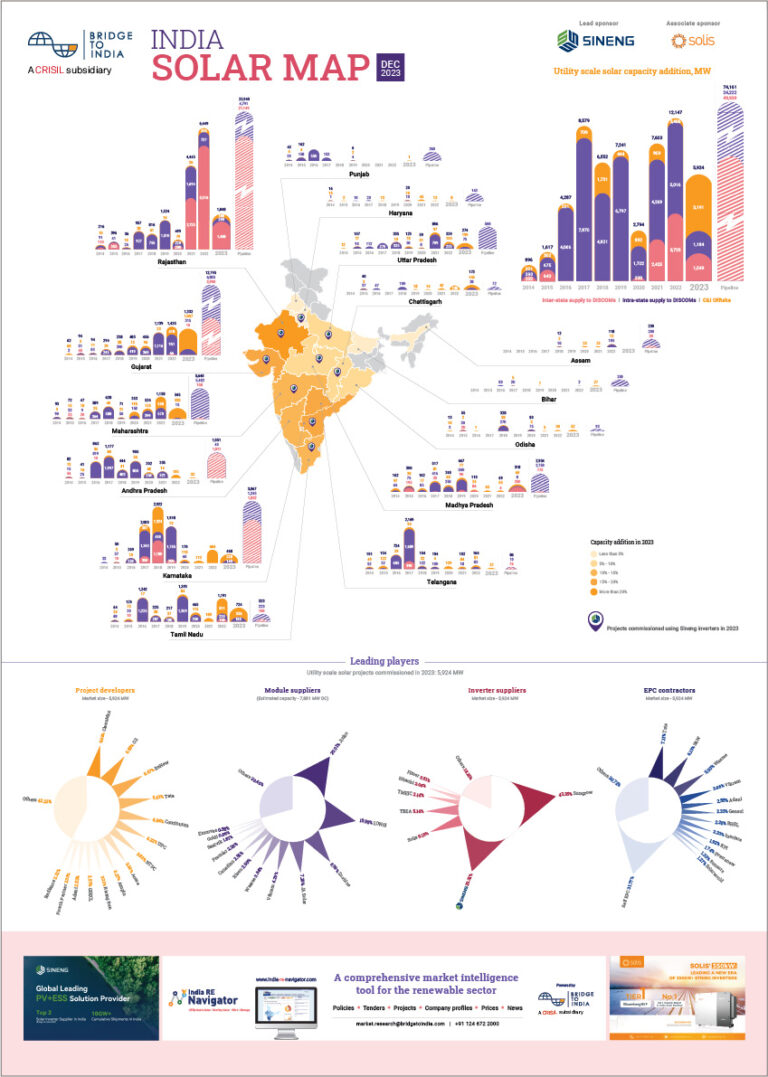MNRE has issued a draft scheme for procuring renewable power, blended with thermal power, on a round-the-clock basis with 80% overall availability. The scheme is technology agnostic. Minimum 51% of power outcome is required to come from renewable sources – with or without storage solutions. Thermal power may be supplied from existing power plants. Bidders are expected to quote a composite tariff with two separate components for variable costs and fixed costs.
- Vanilla renewable power is not able to address evening peak power demand in summer months, the biggest headache for DISCOMs in meeting power demand;
- The proposed scheme may not attract very competitive bids because of limited number of potential bidders with thermal power capacity;
- The potential change in business model from commoditized must-run structure to predictable power is both a challenge and an opportunity for renewable project developers;
As thermal power cannot be ramped up or down in sync with renewable power output variations, storage is expected to play the bridging role. With proposed mandatory blending of thermal power, the scheme remains beyond scope of most renewable power developers. They don’t have access to any in-house thermal capacity and it is implausible that they would take the risk on a third party thermal IPP for a period of 25 years. That leaves only a handful of IPPs straddling both renewable and thermal power sectors – mainly NTPC, Adani, Tata Power, CLP and Sembcorp – potentially interested in the scheme. However, some pure thermal IPPs like Jindals may be induced to make a foray into renewable power. We suspect that because of limited number of potential bidders, the scheme would not attract very competitive bids and may therefore not be cost attractive for the DISCOMs.
The scheme is designed to mitigate the intermittency and variability challenges of renewable power. For DISCOMs, the biggest headache today in meeting customer demand is providing evening peak power in summer months. This evening spike is not catered to by solar or wind power. Prices on power exchanges typically shoot up to INR 6.00-8.00/ kWh in the evenings when power is available at other times of the day at about INR 2.80-3.50/ kWh. As a result, the DISCOMs remain dependent on thermal power (predominantly coal) and are reluctant to increase procurement of renewable power. To make matters worse, peak power demand has been increasing faster than average power demand in the last few years.
Figure: Peak power and low power demand times during the day

Source: Electricity Demand Pattern Analysis by POSOCO, 2016
Faced with resistance from DISCOMs in buying vanilla renewable power, MNRE and SECI have been looking at alternate procurement approaches. SECI has already issued – i) a 1,200 MW solar-wind-storage hybrid tender with provision for up to six hours of morning and evening peak output; and a ii) 400 MW renewable-storage hybrid tender to provide round-the-clock power to Delhi and Dadra & Nagar Haveli. It remains to be seen if the DISCOMs would be willing to pay for the expensive storage-based power, a key reason for failure of grid-scale storage to take off so far.
We see the move away from commoditized must-run-take-or-pay structure to predictable power as inevitable. Renewable power can only grow by adapting to meet market requirement. It is both a challenge and an opportunity for renewable project developers. Having focused solely on reducing LCOE so far, the developers now need to develop new technology skill sets and adjust their business model. Technically savvy developers would see this transition as an opportunity to differentiate themselves and hopefully, earn better risk-adjusted returns.












